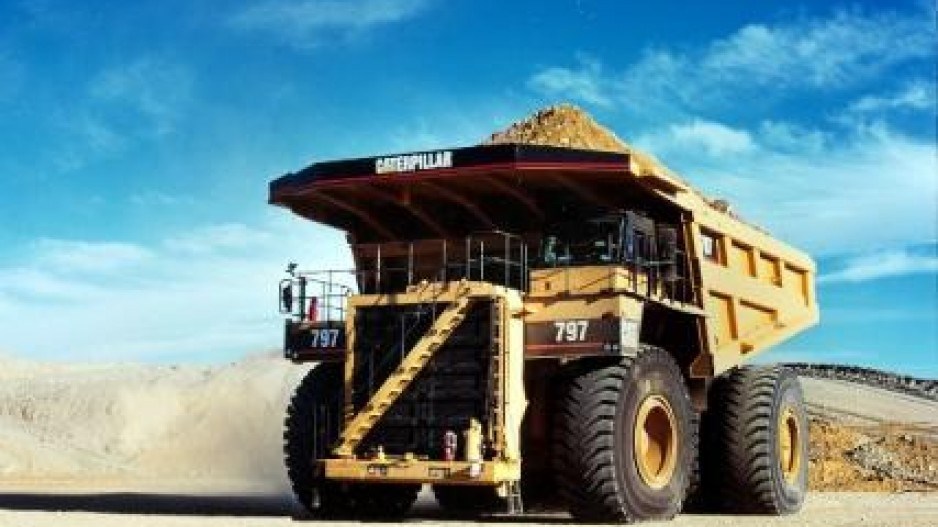Things are not looking good for multi-billion mine projects like the KSM in B.C., according to a new mining global outlook from PwC.
Smaller, leaner projects, may stand more of a chance of getting financed in a new era of prolonged low commodity prices and activist shareholders, according to PwC’s 2015 mining outlook, The Gloves Are Off.
As the title suggests, mining companies will have to fight to survive and they are going to have to get used to operating or building new mines at current commodity prices, rather than pin their hopes on a major rally.
“People aren’t talking anymore about this downturn in commodity prices being temporary,” said John Gravelle, PwC’s global mining leader.
“People looking at current commodities prices are saying, ‘We’re going to have to make our projects work under current prices.’”
And that means only the leanest projects are likely to be financed.
“It’s going to be hard to raise money for multi-billion dollar projects,” Gravelle said. “Good projects will ultimately go forward, but they really have to be on the right side of the cost curve.”
Although projects like the $5.3 billion KSM mine that Seabridge Gold Inc. (TSX:SEA) is trying to develop could be built if the company succeeds in finding a major player as a partner, even the big mining companies are feeling the bit in their mouths, as unhappy shareholders try to rein them in.
“In today’s market, if you’re looking at a big project to get financed, one of the issues you have is the big companies still haven’t won back the confidence of their shareholders,” Gravelle said. “The shareholders don’t want them to go out doing these massive acquisitions and massive capital expenditures.”
PwC’s report is grim. It examined the world’s top 40 mining companies, which lost $156 billion in 2014 – 16% of their combined market value.
Copper is the largest revenue generator among the top 40 miners examined. At current copper prices, many miners are showing little appetite for starting new projects, the PwC report states. Copper is the second most important commodity mined in B.C.
Most of the price decline in mining was in growth-related commodities – iron, metallurgical coal, copper and other metals and alloys used in building things. The main reason: China’s not building nearly as many things as it used to.
China accounts for 40% to 50% of global commodity demand, the report states, and the double-digit growth that drove an unprecedented mining supercycle is a thing of the past.
That cycle drove new mines to be built, and some of the ones now in operation have had to increase production to make up for lower prices, adding to the glut of key commodities like iron and met coal. In 2014, iron ore, coal, and copper prices fell 50%, 26% and 11%, respectively.
Although some majors have cut production, others are pushing forward with expansions, in attempt to boost profits through sheer volume. And that could push higher cost producers out of the market, PwC warns.
B.C. has already witnessed that with Walter Energy Inc. (TSX: WLT) shutting down its more marginal met coal mines in B.C.
Of the top 40 companies examined for the 2015 mining outlook, seven are Canadian. Three are B.C. companies: Goldcorp Inc. (TSX:G), Teck Resources Ltd. (TSX.B:TCK), and First Quantum Minerals Ltd. (TSX:FM). Only Teck has mines in B.C.
“With few exceptions, the commodity price outlook remains dim,” the Pwc report states.
The one good thing about low commodity prices is oil, which affects currency values. Lower crude prices and a stronger U.S. dollar have lowered operating costs for Canadian miners. Miners with high labour costs in Canada or Australia have also seen lower costs as a result of the high U.S. dollar.
If there is any good news for shareholders, it’s that companies that have been promising to get spending down managed to do so in 2014.
“People have been talking about reducing capital expenditures for a few years now,” Gravelle said. “This is the first year they actually went down.”
One of the areas suffering the most from that retrenchment is exploration. The top 40 companies decreased exploration spending by 53% in 2014, spending $4.9 billion, compared with $6.3 billion in 2013 and $12 billion in 2012.




